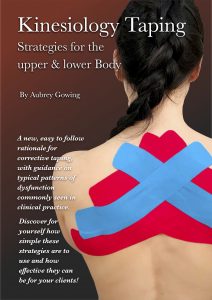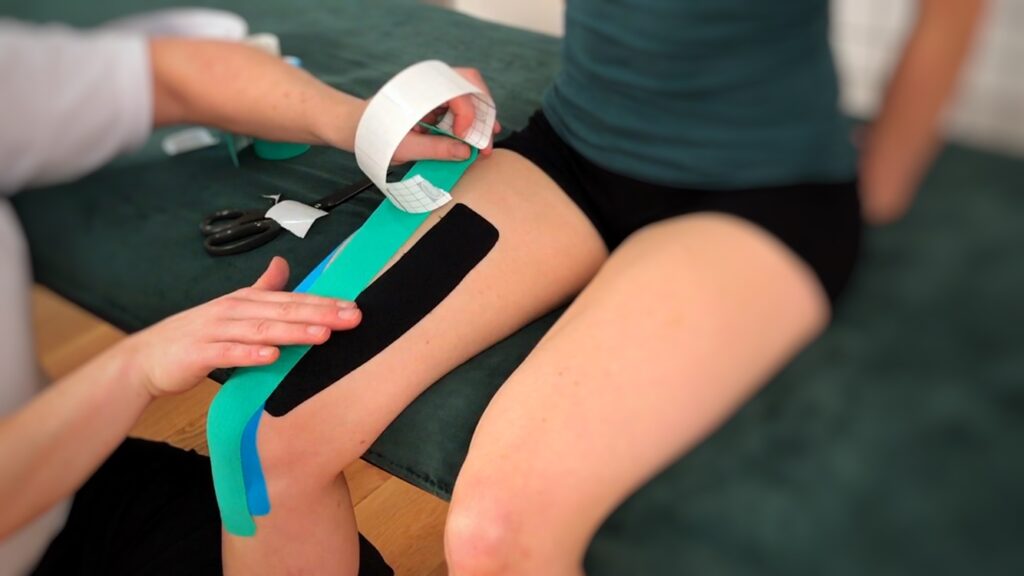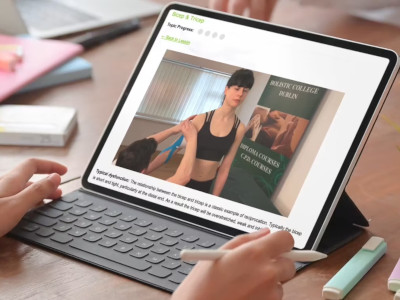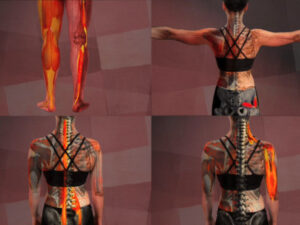Description
Online Course Content

Module one – Welcome
- How to navigate the course content
- Glossary of terms
Module two – Download your textbook
Module three – Theory of taping
- Introduction to concepts
- Skin preparation for taping
- Application and removal of tape
- Tape cuts and pre-cuts
- Colour versus monochromatic taping
- Indications, benefits and contraindications
Module four – Assessments for the foot, ankle and calf
- Postural assessment of the foot ankle and calf
- Ankle and foot, active and passive range of motion
- Muscle resistance tests for the leg and foot
Module five – Strategies for taping the foot
- Flexor digitorum brevis
- Extensor digitorum brevis
- Bunions
Module six – Strategies for taping the ankle
- Lateral ankle ligaments
- Ankle sprains
- Lower leg lymphatics Part 1 and 2
Module seven – Strategies for taping the lower leg
- Gastrocnemius
- Soleus
- Tibialis posterior
- Tibialis anterior
- Fibularis
- Shin splints
Module eight – Assessments for the knee and thigh
- Patella and knee ligament assessments
- Meniscus tests
- Quads and hamstrings muscle resistance tests
- Adductor muscle resistance test
- Abductor muscle resistance test

Module nine – Strategies for taping the knee
- Pes Anserinus
- Collateral ligaments
- Knee pain
Module ten – Strategies for taping the thigh
- Sartorius
- Quadriceps
- Adductors
- Abductors
- Hamstrings
Module eleven – Assessments for the pelvis and hip
- Trendelenburg test
- Iliotibial Band assessment
- Piriformis assessment
- Deep hip rotators
- Sacroiliac joint assessment
Module twelve – Strategies for taping the pelvis
- TFL and the iliotibial band
- Inguinal lymph drainage
- Sacroiliac joint support

Module thirteen – Assessments for the back
- Sit and reach for facet opening
- Thomas test to evaluate extensibility in the hip flexors
- The Ober test to evaluate extensibility in T.F.L.
- Straight leg raise to assess hamstring extensibility and possible impact on pelvic tilt
- Adam’s test for differentiating between fixed and functional components of a Scoliosis
- Erector spinae & Multifidus muscle resistance test
Module fourteen – Strategies for taping the back
- Deep lumbar curve – Hyperlordosis
- Flat low back – Hypolordosis
- Excessive thoracic curve -Hyperkyphosis
- Flat thoracic spine – Hypokyphosis
- Scoliosis – lateral curvature of the spine

Module fifteen – Assessments for the chest & shoulder
- Pectoralis major and minor muscle resistance tests
- Postural assessment for the shoulder and arm
- Shoulder Range Of Motion
- Rotator cuff muscle resistance tests
- Deltoid muscle resistance tests
- Bicep & Tricep muscle resistance tests
Module sixteen – Strategies for taping the torso
- Pectoralis major
- Pectoralis minor
- Abdominal lymphatic taping
Module seventeen – Strategies for taping the shoulder
- Serratus anterior
- Rhomboids
- Infraspinatus & Supraspinatus
- Deltoid Option 1 & 2
Module eighteen – Assessments for the arm & hand
- Bicep & Tricep muscle resistance tests
- Forearm and hand Range Of Motion assessments
- Forearm & hand muscle resistance tests
- Finkelstein Test
Module nineteen – Strategies for taping the shoulder
- Bicep & Tricep
- Supinator & Pronator Teres
- Wrist flexors, extensors and retinaculum Support
- de Quervain’s tendinopathy
Module twenty – Case studies / SOAP notes



